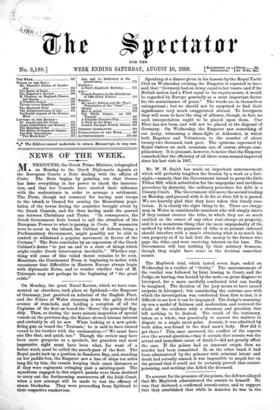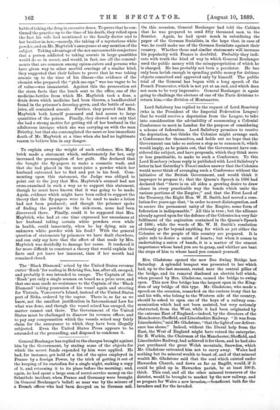To account for the presence of the poison, the defence
alleged that Mr. Maybrick administered the arsenic to himself. He was, they declared, a confirmed arsenic-eater, and to support this they established that while in America he was in the habit of taking the drug in excessive doses. To prove that he con- tinued the practice up to the time of his death, they relied upon the fact his wife had mentioned to the family doctor and to her brother-in-law,ânamely, the taking of a mysterious white powder, and on Mr. Maybrick's annoyance at any mention of the subject. Taking advantage of the not unreasonable conjecture that a person addicted to taking arsenic in large quantities would do so in secret, and would, in fact, use all the conceal- ments that are common among opium-eaters and persons who have given way to other morbid cravings of a similar kind, they suggested that their failure to prove that he was taking arsenic up to the time of his illnessâthe evidence of the chemist who prepared the " pick-me-ups " was too vague to be of valueâwas immaterial. Against this the prosecution set the stern facts that the lunch sent to the office, one of the medicine-bottles from which Mr. Maybrick took a dose, a drain down which medicine had been thrown, a handkerchief fond in the prisoner's dressing-gown, and the bottle of meat- juice, all contained arsenic. Further, they proved that Mrs. Maybrick both herself possessed and had access to large quantities of the poison. Finally, they showed not only that she had a strong motive for getting rid of her husband in the adulterous intrigue which she was carrying on with the man Brierley, but that she contemplated the more or less immediate death of Mr. Maybrick at a time when she had no legitimate reason to believe him in any danger.



































 Previous page
Previous page